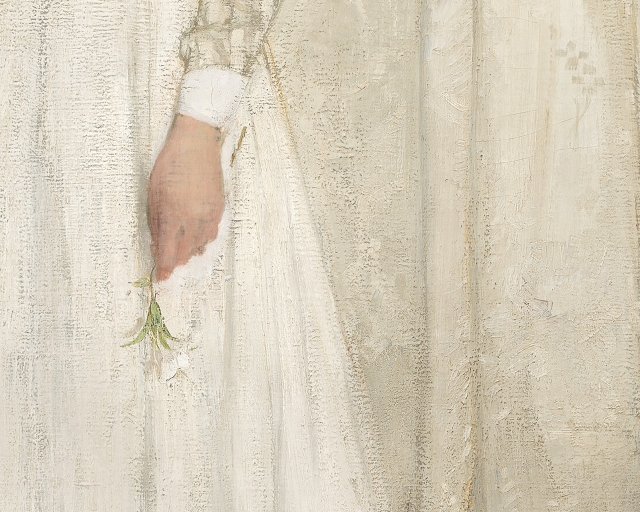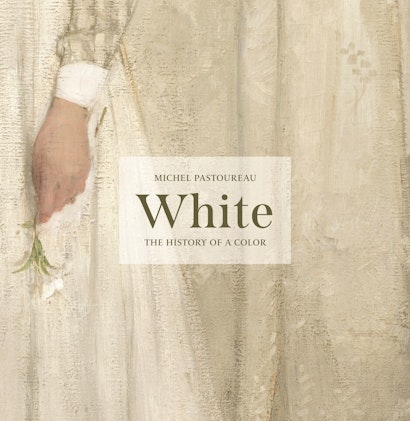Since the publication of Blue over twenty years ago, Michel Pastoureau’s The History of a Color series has explored the material, sensory, and symbolic dimensions of colors across the western world. Moving away from those who might wish to find a universal symbolism or archetypal truth in a color, Pastoureau’s series has sought to understand color as first and foremost a social phenomenon, one with historically grounded realities and effects.
The famed medieval art historian, Michael Camille, wrote that in Pastoureau’s work, “the history of one color becomes the history of culture itself.” As a scholar whose work was dedicated to understanding the labor of medieval artists and uncovering the voices of oppressed figures in the margins of medieval art, Camille’s words showcase the power of Pastoureau’s series to unsettle and disturb our familiar understanding of colors, what they represent, and how they have been mobilized over millennia for different aims and goals. In tracing the enduring life of a given color, Pastoureau has seamlessly woven ancient theories of vision with the nuances of medieval spirituality and the transformations of the early modern period during the rise of colonialism and capitalism.
In his research methods and approach, Pastoureau’s series reflects two animating concerns in the study of art history and culture, namely, an interest in materiality and visuality. Over the past two decades, scholars have been attentive to how the materials and making of art contribute to their social meaning and function, while similarly seeking to understand how vision and perception affect our experiences of art. While we might take our modern understanding of optics for granted, throughout the ancient and medieval worlds, philosophers, theologians, and authors contemplated and debated how sight operates and how we perceive colors, understanding this as a physical, sensory, and perceptual phenomenon. Naturally, a series that looks at the history of color contributes directly to our knowledge of how matter and vision intersect. Pastoureau’s work acknowledges not only how pigments and colors were sourced, traded, made, and applied, but also how people through the ages have made meaningful distinctions between individual colors and applied purpose and meaning to them. As our research has continued to expand into the multi-sensory effects of the work of art, art historians have begun to look at how color, light, and optics combine with other sensory experiences, including hearing, touch, smell, taste, and other elements like the experience of weight and movement.
It is fitting that the History of a Color series would end with a volume dedicated to white. Not only did the Ancient Greeks believe that all colors emerged as the intermediaries between black and white, but white also has come to be understood in the modern world as the outright absence of color. Yet nothing could be further from the truth. In this volume, Pastoureau vividly demonstrates how white was never understood as being “colorless” in the ancient tradition, coming only to be associated with this state of absence in the late Middle Ages and at the beginnings of modernity. The power of Pastoureau’s White is that it confronts the reader with the artificiality and construction of white, tracing out the tensions it created regarding how other colors were conceptualized and understood across several millennia. As the author states, this is hardly a comprehensive work, but one that urges scholarship to think further about the history of white and how it is that it came to be understood as such an enigmatic and fraught category.
On this occasion of the publication of this sixth and last volume in the series, we can appreciate the contributions that the series has made to our understanding of color and vision, but also reflect on its utility for ongoing and future areas of study.
As a scholar whose work has not only traced theories of vision and multi-sensory perception in the Early Christian and Medieval worlds, but also processes of race-making and racialization in the premodern past, I am intimately aware of how the study of color becomes as pertinent today as it was two decades ago when the series was in its infancy. Pastoureau’s color studies allow the novice and expert reader alike to survey the long trajectories that colors have had across the premodern and modern world. This permits us to better understand the vicissitudes of how colors can be variously used to stage piety or penance in the medieval world, or to articulate ethnic differences and racialized groupings across ancient peoples. While it has long been assumed that color-based ideas of race did not exist in the premodern past, ongoing scholarship has begun to demonstrate the rich and compelling evidence present across ancient Greek, Roman, and medieval sources to understand how premodern people thought about racialized differences and how color could also be deployed to delineate other differences, like gender identity or even sexuality.[i]
The material history of color itself also alerts us to the vibrant and dynamic interconnectedness of our world. While it is popularly believed that ancient or medieval people had limited interactions with the broader world, the study of trade routes, like the Silk Road or trans-Saharan trade, are expanding our horizons of contact and exchange.[ii] Color, in these instances, can reflect not only how people came to visualize and represent each other, but it also speaks to how our distinctions between discrete colors evolved with contact with other civilizations, how trade and transport created new color possibilities, and how the privileging of certain colors promoted colonialism and other extractive approaches to land, people, and natural resources. With the rising interest in the Global Middle Ages, studies of color can now look beyond the European Middle Ages to think comparatively and to acknowledge how colors took on radically different meanings and operations across the world during a single period.[iii]
As any volume of Pastoureau’s series demonstrates, color is never an innocent or passive entity in our world, but an important actor in its one right. Color not only shapes how people have represented their own stories across time, but also reminds us of it has motivated human action around its sourcing, manufacturing, and meaning. Michel Pastoureau’s The History of a Color series can serve as a starting point to further interrogate the varied and complex histories and complicities of color in our world, past, present, and future.
This essay is an excerpt from the introduction of White: The History of a Color by Michel Pastoureau.
Roland Betancourt is professor of art history at the University of California, Irvine. He is the author of Performing the Gospels in Byzantium and Sight, Touch, and Imagination in Byzantium.
Notes
[i] The study of race in Antiquity and the Middle Ages is a current and thriving area of research with much work appearing constantly. Therefore, this is a very partial bibliography, but it is intended to give the reader a roadmap to pursue, highlighting key figures, books, and additional resources for following this area of research. For an introduction to the study of race in the ancient and medieval worlds, see Cord Whitaker, Black Metaphors: How Modern Racism Emerged from Medieval Race-Thinking (Philadelphia, 2019); Geraldine Heng, The Invention of Race in the European Middle Ages (Cambridge, 2018); Roland Betancourt, Byzantine Intersectionality: Sexuality, Gender, and Race in the Middle Ages (Princeton, 2020); Denise Kimber Buell, Why This New Race: Ethnic Reasoning in Early Christianity (New York, 2008); Denise Eileen McCoskey, Race: Antiquity and its Legacy (Oxford, 2012); Francisco Bethencourt, Racisms: From the Crusades to the Twentieth Century (Princeton, 2014). For an introductory bibliography (up to 2017), see Jonathan Hsy and Julie Orlemanski, “Race and Medieval Studies: A Partial Bibliography,” postmedieval: a journal of medieval cultural studies 8 (2017): 500-531. For further, ongoing work, see Dorothy Kim (ed.), “Critical Race and the Middle Ages” Special Issue, Literature Compass 16:9-10 (2019); Urvashi Chakravarty and Ayanna Thompson (eds.), “Race and Periodization” Special Issue, New Literary History 52:3/4 (2021).
[ii] For an introduction to these topics, see Peter Frankopan, Silk Roads: A New History of the World (New York, 2016); Kathleen Bickford Berzock (ed.), Caravans of Gold, Fragments in Time: Art, Culture, and Exchange Across Medieval Saharan Africa (Princeton, 2019).
[iii] For an introduction, see Geraldine Heng, The Global Middle Ages: An Introduction (Cambridge, 2021). For an art historical approach, see Bryan Keene (ed.), Toward a Global Middle Ages: Encountering the World Through Illuminated Manuscripts (Los Angeles, 2019).

